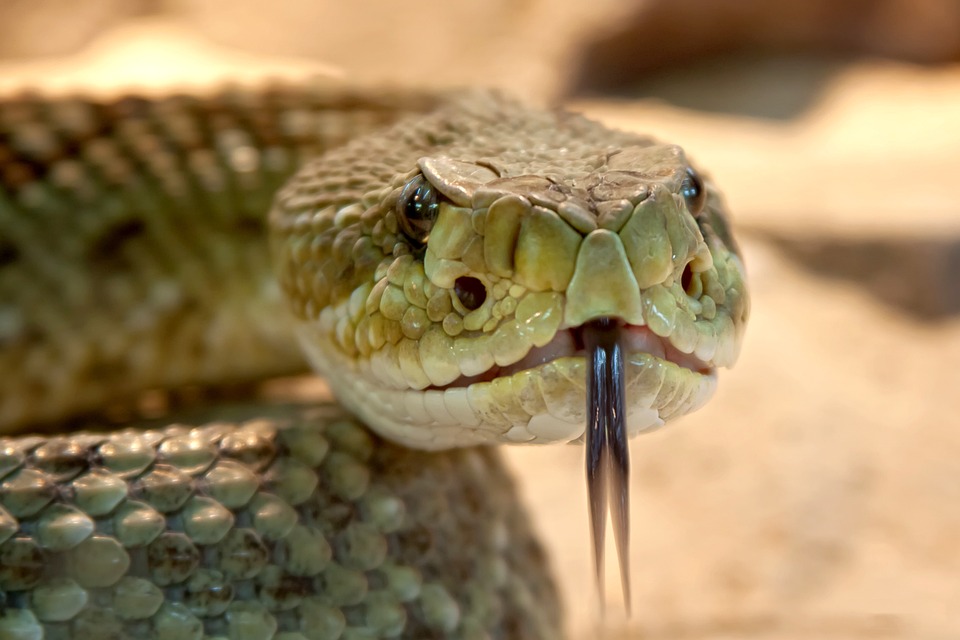Introduction
The terms “venomous” and “poisonous” are often used interchangeably when referring to creatures that can inflict harm through toxic substances. However, there are crucial differences between these two terms that are essential for understanding the nature of these animals and their toxins. This article will clarify the distinctions between venomous and poisonous creatures and address common misconceptions about their risks and behaviors.
Defining Venomous and Poisonous
Understanding the terms “venomous” and “poisonous” helps distinguish between the harmful animals and plants in the natural world. The primary difference between these terms lies in how the toxins are delivered:
- Venomous: These creatures produce and store venom, a toxic substance that is actively injected into another organism, typically through a specialized apparatus like fangs, spines, or stingers. Examples of venomous animals include snakes, some species of spiders, and scorpions.
- Poisonous: These organisms contain toxic substances within their tissues or secretions, which are passively transferred when they are ingested, touched, or inhaled. Examples of poisonous creatures include poison dart frogs, some species of insects, and certain plants like poison ivy.
Adaptations for Defense and Prey Capture
Venomous and poisonous creatures may have evolved their toxic traits for different purposes, such as defense against predators or as a means to capture prey. For example:
- Venomous: Many venomous animals use their venom to immobilize or kill their prey, making them more efficient predators. Some venomous creatures also use their toxins defensively, delivering painful stings or bites to deter potential threats.
- Poisonous: Poisonous organisms often rely on their toxic compounds for defense. Brightly colored markings, known as aposematism, advertise their toxicity to predators. In some cases, poisonous animals may even mimic the appearance of other toxic creatures to increase their chances of avoiding predation.
Myths and Misconceptions about Venomous and Poisonous Creatures
There are many misconceptions about these creatures and the risks they pose to humans. Here are some common myths debunked:
- Myth: All venomous creatures are dangerous to humans.
Reality: While some venomous animals can pose a significant risk to human health, many species have venom that is harmless or only mildly irritating.
- Myth: All brightly colored animals are poisonous or venomous.
Reality: Although bright colors can be a warning sign of toxicity, not all brightly colored animals are toxic. Some harmless species even mimic venomous or poisonous creatures to deter predation.
- Myth: There is a universal antidote for all venomous bites and stings.
Reality: There is no single remedy for all venomous bites and stings. Different venomous species require specific treatments, and some do not have available antivenoms.
Conclusion
Understanding the differences between venomous and poisonous creatures is crucial for appreciating the diversity of adaptations and survival strategies in the natural world. While these toxic organisms may inspire fear, they also contribute to the richness and complexity of ecosystems. Recognizing the distinctions between venomous and poisonous creatures and debunking common myths not only fosters a more nuanced understanding of nature but also helps promote more informed and respectful interactions with these fascinating organisms.
Frequently Asked Questions (FAQs)
- 1. What is the main difference between venomous and poisonous creatures?
- The primary difference between venomous and poisonous creatures is how they deliver their toxins. Venomous organisms actively inject venom into another organism through a specialized apparatus, while poisonous organisms transfer their toxins passively through ingestion, contact, or inhalation.
- 2. Are all venomous or poisonous animals dangerous to humans?
- No, not all venomous or poisonous animals are harmful to humans. Many species have venom or toxins that are harmless or only mildly irritating to humans.
- 3. Can the terms “venomous” and “poisonous” be used interchangeably?
- No, the terms “venomous” and “poisonous” should not be used interchangeably, as they refer to distinct biological features and methods of toxin delivery.

No responses yet